- Home
- Michael Connelly
The Safe Man
The Safe Man Read online
The Safe Man
A Ghost Story
Michael Connelly
Little, Brown and Company
New York Boston London
Begin Reading
Look for The Black Box
Table of Contents
Copyright Page
In accordance with the U.S. Copyright Act of 1976, the scanning, uploading, and electronic sharing of any part of this book without the permission of the publisher constitute unlawful piracy and theft of the author’s intellectual property. If you would like to use material from the book (other than for review purposes), prior written permission must be obtained by contacting the publisher at [email protected]. Thank you for your support of the author’s rights.
The Safe Man
The house on Shell Island was as its owner had described it over the telephone, large and white with black shutters and wide porches running the length of both the first and second floors. The house had two dormer windows that creased the roofline like eyebrows raised in surprise or maybe anger. The columns that sustained the double layer of porches looked like teeth below those eyes. Brian Holloway parked his van on the left side of the turnaround and got out without any of the tools he would need. It was his routine to meet the client first, survey the job and provide an estimate, then come back to the van for the appropriate equipment if he secured the job.
It took two rings of the bell and a hard rap from the brass lion’s-head knocker before anyone answered the door. It was a man in blue jeans and a sweatshirt. He was barefoot. He was clean-shaven and Brian guessed they were of similar age. Late thirties, maybe a little older. The man had a scowl on his face.
“Didn’t you see the sign?” he asked.
“The sign?”
The man pointed to a small brass plaque posted beneath the mailbox to the left of the door. It said ALL SERVICE AT SIDE DOOR. There was an arrow pointing to the right.
“Uh, no, sorry, I didn’t.”
“I will see you over there. And could you move your van to the driveway on the side as well?”
It was a question but it wasn’t spoken as a question.
“Sure.”
The man abruptly closed the door. Brian walked back to his van, trying to hold back his anger. He reminded himself it was a job and yes, he was, after all, in the service industry. He moved the van to the driveway that went down the side of the house and widened in front of a three-car garage. He found the service door and headed toward it. As he walked he looked across the expansive backyard to the view of the open bay.
The same man from the front door opened the service door before he got there.
“Are you Mr. Robinette?” Brian asked, though he recognized him from photos on the back of his books.
“Yes, that is right. You are the safe man, I assume?”
“Yes, sir.”
Brian could see Robinette eyeing his van. He realized he had forgotten to attach the magnetic signs to the side panels. He worked out of his house—his garage, actually—and neighbors complained about having a commercial van parked there all the time. So he painted the van a pleasing pale blue and went with magnetic signage. The problem was he often forgot to put the signs on when he went out on a call.
“Don’t you have any tools?” Robinette asked.
“I like to look at the job first, then figure out what I need,” Brian replied.
“Follow me, then.”
Robinette led him down a back hallway that went through a kitchen that looked as though it had been designed to serve a restaurant or maybe Noah’s Ark. He counted two of everything: ovens, stoves, sinks, even dishwashers. They moved through a vast living room with three separate seating areas and a massive fireplace. Finally, they came to a library, a room smaller than the living room but not by much. Three of its walls were lined floor to ceiling with shelves. The books were bound in leather and the room smelled musty. There were none of the bright colors Brian saw on book jackets whenever he went into a bookstore. He didn’t see any of Robinette’s books on the shelves.
In the center of one end of the room was a large mahogany desk with a computer screen on it. A bust of Sherlock Holmes sat on a stack of white paper as a paperweight. In front of the desk was a Persian rug of primarily maroon and ocher.
Without a word Robinette used his foot to flip up the corner of the rug. He then kicked the fold back until the rug had been moved aside to reveal a small rectangular door set in the wood flooring. Brian estimated that it was two feet by one and a half feet. The door was old plywood and there was a finger hole for pulling it up and open. There were no hinges that Brian could see. Robinette reached down and pulled the door up. He then used both hands to lift the plywood inset out.
The opening revealed another door, a few inches below—the black steel facing of a safe with dusty gold filigree at the edges, a brass combination dial, and a hammered-steel handle. Robinette crouched next to the opening and reached down and gave the steel handle a solid tug, as if to show Brian it was locked.
“This is it,” he said. “Can you open it?”
Brian crouched down across the opening from Robinette and looked at the box. He could see writing in gold script beneath the combo dial. He braced his hands on the floor and leaned down closer to read it. It looked like it said Le Seuil but he wasn’t sure. What he was sure of was that he didn’t recognize the safe or its manufacturer, let alone know how to pronounce its name. He gave the dial a turn just to see whether it was frozen, and it turned smoothly. That wouldn’t be a problem. He straightened up until he was kneeling on the floor next to the opening.
“I don’t recognize the make offhand,” Brian said. “In a perfect world I’d have a design schematic. It always helps to know what you’re getting into. But don’t worry. I can open it. I can open anything.”
“How much will it cost?”
“Unless I find it in one of my books, it’s probably going to be a double drill. I charge one-fifty for the first and a hundred for the second.”
“Jesus. You’re killing me.”
“I might get lucky with the first drill. You never know.”
“Just do it. I want that thing open. Too many people have seen it.”
Brian wasn’t sure what he meant by that.
“Do you have any idea how old this thing is?” he asked.
“The house was built in ’twenty-nine. I assume that it came with it.”
Brian nodded.
“You said on the phone you just bought this place?”
“That’s right.”
“The former owner didn’t give you the combo?”
“Do you think you’d be here if he did?”
Brian didn’t answer. He was embarrassed by his stupid question.
Robinette continued as if he had not asked a question. “It was an estate sale. The old man who lived here died and he took the combination with him. Nobody even knew there was a safe until I had the floors redone before moving in. Now all the painters, the electricians—everybody who was working on this place to get it ready—knows I have a safe in here. You ever read In Cold Blood?”
“I think I saw the movie. That’s the one with Robert Blake playing a killer before he supposedly became a real killer, right?”
“That’s right. It’s the one where they kill a whole family to get to the fortune in the safe. Only there isn’t any fortune. Every one of those workers who was in here went out and told who knows who about the safe I’ve got in here. I started having dreams. Me with a gun to my head, being told to open up a safe I don’t know how to open. I know these guys. I write about them. I know what they’re capable of. I’ve got a daughter. I want that safe open. I don’t even want a safe. I don’t have anything to put in it.”
Brian
had never read one of Paul Robinette’s novels, but he knew before he ever saw the house that he was successful. He’d seen stories about him in the local papers and national magazines. He’d seen a couple of the bad movies based on the books. Robinette wrote crime novels that were bestsellers, though Brian didn’t think there had been a new book in the stores in a long while. Brian was willing to accept him as an amateur expert on the criminal mind. But he didn’t think that qualified Robinette as an expert on the character of painters and electricians and floor refinishers.
“Well, Mr. Robinette, whatever the reason, I will get it open for you.”
“Good. Then after you get it open, can you get it out of here?”
“The whole safe?”
“That’s what we’re talking about, isn’t it?”
Brian looked down at the edges of the safe. The steel framing went under the flooring. He was pretty sure the houses out on the island were built on fill—the coral and shells dredged up to dig the barge channel leading to the phosphate plant.
“You’ve got no basement here, right?” he said. “No way under the house?”
“No, no way.”
“Then it looks like I’d have to tear up the floor. It goes over the lip of the box. This wood is so old you’d never match it. But I guess you could keep it covered with the rug.”
“No, I don’t want to tear up the floor. I’ve spent enough on the floor. What about the door? Can you just take it off? I could leave it with just the plywood on top, cover it back up with the rug.”
“Once I get it open I can take it off if you want. But why? You might as well just leave it unlocked.”
“Three words: In Cold Blood. Things could go wrong. I want the door taken off. Go get your tools.”
“Yes, sir.”
Brian started out of the room.
“Excuse me. Are you being sarcastic?” Robinette asked.
Brain stopped and looked at him.
“Uh, no sir. I’m just going to get my tools. By the way, it’s going to get really loud in here when I start drilling and hammering. It might last a while, too—depending on the thickness of the front plate.”
“Beautiful. I’ll work in the upstairs study.”
In the van Brian looked through all his manuals and catalogs for a listing on Le Seuil or anything close to it. He found nothing. He called Barney Feldstein, who worked in San Francisco and was the most knowledgeable box man he knew, and even Barney had never heard of the maker. He put Brian on hold and checked the archives of the Box Man website. When he came back on, he had nada.
What Brian wished was that he could talk to his old man about it. If anybody knew the safe maker, it would be him. But that was impossible. It took a request from a lawyer to set up a phone call, and a letter was useless. He needed advice right now. Resigned to the idea that he would go in blind, he gathered his tools and went back into the house. Robinette was still in the study. He was gathering some files from the desk to take with him upstairs.
“I couldn’t find anything in the manuals and I called a guy who’s been doing this longer than anybody I know in the business,” Brian said. “He never heard of this safe company either. So I’ll do my best, but it’s looking like a double drill.”
“Explain to me why you have to drill it twice,” Robinette said impatiently.
“I’ve got to pop out what they call the free wheel. It’s the locking gear. To do that I have to drill through the front plate so I can hit it with a spike. With most safes, I know where the free wheel is. I have design manuals. I can look it up. I then come through with the drill, pop the gear, and open the safe. With this one, I’m going in blind. I’ll take an educated guess but most likely I’ll miss. I’ll then snake it with a camera, find the right spot, and drill it again.”
“You’re sure you’re not just taking advantage of me here?”
“What?”
“How do I know this isn’t some kind of scam designed to get the double dip? Or the double drill, as the case may be.”
Brian was thinking that he ought to pick up his tools and just walk out, leaving the arrogant writer with his unopened safe. You open it, asshole. But he needed the money—Laura was planning to take the option of extending her maternity leave by four unpaid weeks. Besides, he was curious about the safe. He’d have something to post on the website after he got it open.
“Look,” he said to Robinette. “If you want to go out to the van and look in the manuals and try to find this, be my guest.”
Robinette waved off the suggestion.
“No, never mind. Just get it done. Come to the bottom of the stairs and call for me when you are about to open it. I want to be here to see what that old fool Blankenship put in there.”
“Arthur Blankenship? This was his house?”
“Yes, that’s right. Did you do work for him?”
“No, I just knew of him. He owned the plant. His father dug the channel.”
“Yes, that’s right. The Blankenships made this city what it is today. I’ll be upstairs.”
He left the room, carrying his files with him. Brian shook his head. He hated working for assholes but it was part of the job. He turned and looked down at the safe. Every job was a little mystery. He wondered when the black steel door was last opened. He wondered what Arthur Blankenship had put in there.
The first thing Brian did was strap on his kneepads. He then got down on the floor and contemplated the spacing between the combo dial and the handle. He took a piece of white chalk out of his toolbox and marked an X on the door about three inches to the right of the dial on a direct line to the handle. He knew he’d at least be close.
He set the tripod up over the X and hooked the lock-down chain to the safe’s handle. He fitted a half-inch bit into the drill, mounted it on the tripod, and plugged it into a nearby wall socket. He was ready to go. From the toolbox he took out the gloves, safety glasses, and breathing mask, and put them on. Last, he pressed foam plugs into his ears.
The first drill bit lasted twenty-five minutes before shattering. He guessed he had gone in only a quarter inch at that point. He let the drill cool for a few minutes while he drank a bottle of water he got out of the toolbox. He then locked a new bit into place.
The second bit completed the penetration. Brian pulled the drill out and checked the hole. It appeared that the front plate was three-quarters of an inch thick. He unlocked the tripod and moved it out of the way. The drill hole was still smoking and hot. Brian leaned down and blew away the steel shavings that had accumulated around it.
He got the camera scope out of the toolbox, plugged it in, and turned it on. He manipulated the snakelike camera extension, bending it into a curving L shape. He then fed it into the drill hole, keeping his eyes on the small black-and-white video display screen.
Almost immediately Brian saw movement inside the safe. A whitish gray blur moved across the three-inch-wide screen. He froze for a moment. What was that?
He moved the camera in an exaggerated sweep but saw nothing else. Was it smoke? Had he really seen something? He wondered if the camera movement had simply blurred a reflection of the camera’s light off one of the gears or the underside of the faceplate.
The video display had no playback function. It did not record. Brian could not go back to check the movement again. He felt a small tremble go up his spine and neck. He stared at the display for a few more moments and then started moving the scope again. He knew there couldn’t have been movement. It had to have been a reflection or a concentration of smoke left over from the drill-through.
He saw no further movement in the display. But he did see that the safe’s door had no back plate. This, he guessed, had been removed to make the door lighter, since it opened up rather than out. It probably saved fifteen or twenty pounds in the lifting.
Since the back plate was missing, Brian knew he could use the scope to see into the cavity of the safe and check its contents ahead of Robinette. He pulled the tool out of the drill hole, st
raightened it, and then snaked it back in. The camera’s light reached all corners of the safe. Brian saw that it was empty, save for the layer of dust that had gathered over time at the bottom.
“No treasure today,” Brian said to himself.
He once more removed the scope, reconfigured it, and then fed it back into the hole. By moving the scope, he was able to view the internal workings of the safe’s locking mechanism. He was surprised. He counted nine gears. Most safes had three or four at the most. Never nine. He knew that when he posted a report on this job on the site, other box men would not believe him. He decided he would go out to the van and get his digital camera after he got the safe open. His plan would be to post a report on the site and then once the doubters posted their negatives, he would upload a few photos—count ’em, nine gears—and put them all in their place.
He refocused on the work and quickly identified the free wheel—the gear that would release the locking mechanism when popped loose. He measured its location on the front plate. Once more he marked the surface with chalk and pulled the tripod into place.
The second drill-through cost him three bits, and by the end his drill smelled like it was burning up inside. This door was—in box man’s parlance—a Dutch Treat, meaning the costs of broken or damaged equipment made the job a barely break-even proposition. Brian knew there was no way he’d be able to ding Robinette for the burned-out drill and the bits. He’d be lucky if the writer even paid him the extra hundred for the second drill-through.
He got the spike and the mallet out of the toolbox. He slid the spike into the second drill hole and felt it click against the free wheel. He raised the mallet to strike it but then stopped. He remembered that Robinette wanted to witness the opening of the safe.
Brian stood up. His shirt was sticking to his back and perspiration had popped across his forehead. He took off the safety glasses and the mask and blew out his breath. He walked out of the study and found the main hallway and the stairs. It was a grand staircase that swept upward in a curve.

 Blue on Black
Blue on Black The Black Ice (1993)
The Black Ice (1993) Crime Beat: A Decade of Covering Cops and Killers
Crime Beat: A Decade of Covering Cops and Killers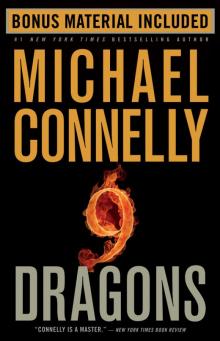 Nine Dragons
Nine Dragons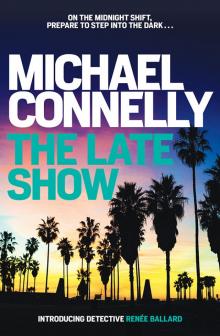 The Late Show
The Late Show City of Bones
City of Bones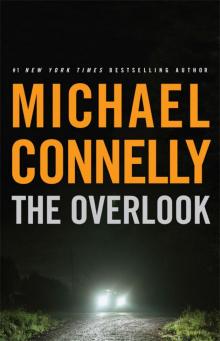 The Overlook
The Overlook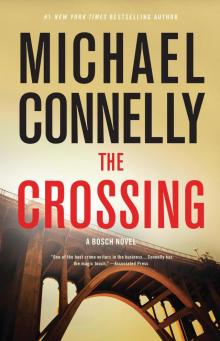 The Crossing
The Crossing The Poet (1995)
The Poet (1995) Murder Worthy
Murder Worthy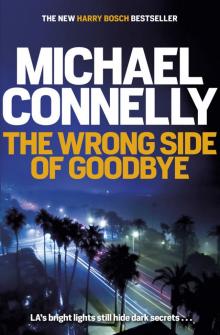 The Wrong Side of Goodbye
The Wrong Side of Goodbye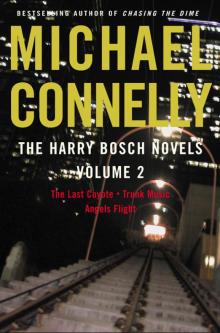 Harry Bosch Novels, The: Volume 2
Harry Bosch Novels, The: Volume 2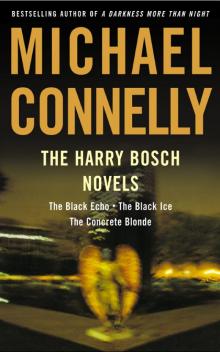 The Harry Bosch Novels
The Harry Bosch Novels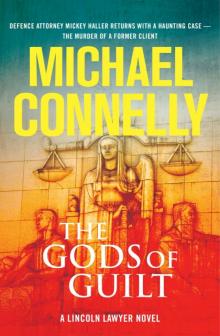 The Gods of Guilt
The Gods of Guilt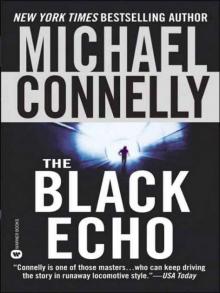 The Black Echo
The Black Echo The Reversal
The Reversal Two Kinds of Truth
Two Kinds of Truth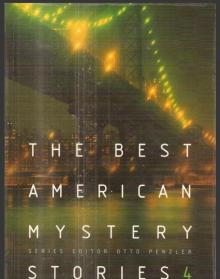 The Best American Mystery Stories 2003
The Best American Mystery Stories 2003 The Rag
The Rag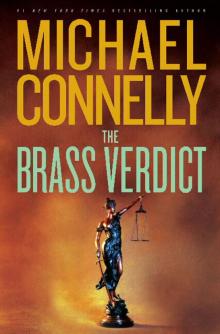 The Brass Verdict
The Brass Verdict The Black Echo (1992)
The Black Echo (1992) Switchblade
Switchblade The Last Coyote
The Last Coyote The Narrows
The Narrows The Concrete Blonde (1994)
The Concrete Blonde (1994)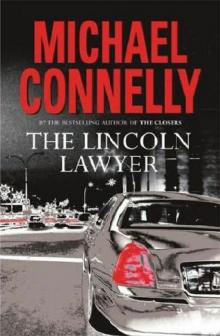 THE LINCOLN LAWYER (2005)
THE LINCOLN LAWYER (2005)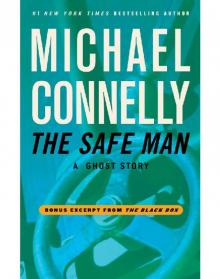 The Safe Man: A Ghost Story
The Safe Man: A Ghost Story Angels Flight (1998)
Angels Flight (1998) Void Moon
Void Moon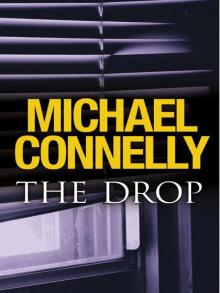 The Drop
The Drop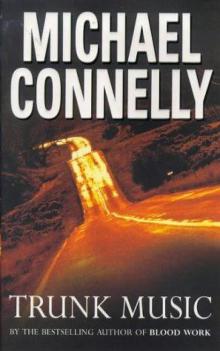 Trunk Music
Trunk Music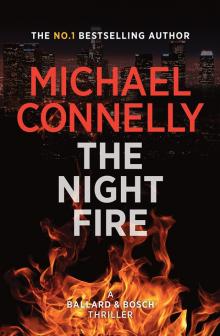 The Night Fire
The Night Fire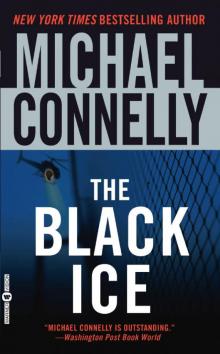 The Black Ice
The Black Ice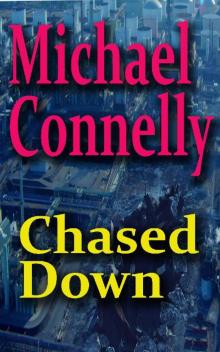 Chased Down
Chased Down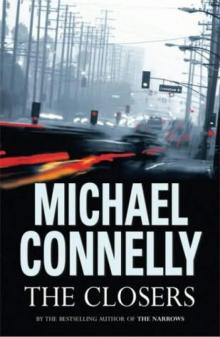 The Closers
The Closers The Burning Room
The Burning Room Angels Flight
Angels Flight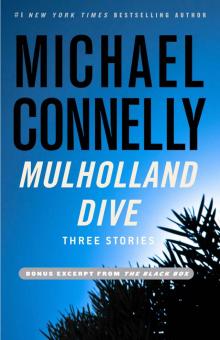 SSC (2012) Mulholland Drive
SSC (2012) Mulholland Drive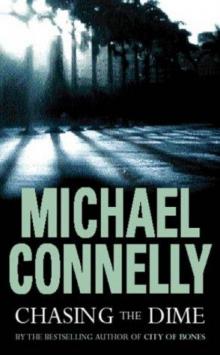 Chasing the Dime
Chasing the Dime The Lincoln Lawyer
The Lincoln Lawyer Blood Work (1998)
Blood Work (1998) Echo Park
Echo Park A Darkness More Than Night
A Darkness More Than Night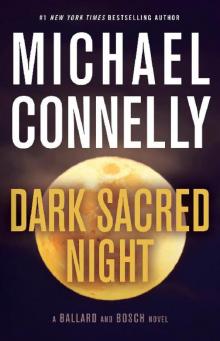 Dark Sacred Night - Ballard and Bosch #1;Renée Ballard #2
Dark Sacred Night - Ballard and Bosch #1;Renée Ballard #2 Lost Light
Lost Light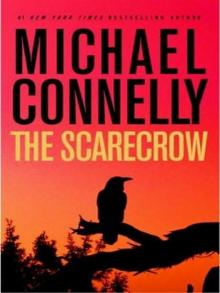 The Scarecrow
The Scarecrow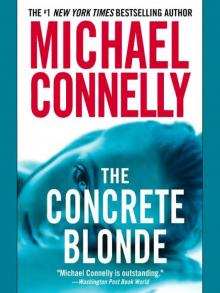 The Concrete Blonde
The Concrete Blonde Angle of Investigation
Angle of Investigation Suicide Run: Three Harry Bosch Stories
Suicide Run: Three Harry Bosch Stories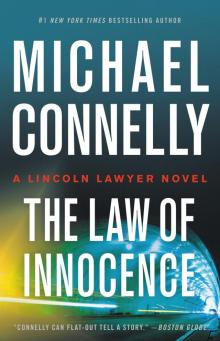 The Law of Innocence
The Law of Innocence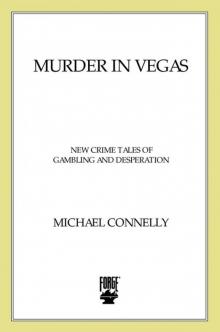 Murder in Vegas: New Crime Tales of Gambling and Desperation
Murder in Vegas: New Crime Tales of Gambling and Desperation City Of Bones (2002)
City Of Bones (2002)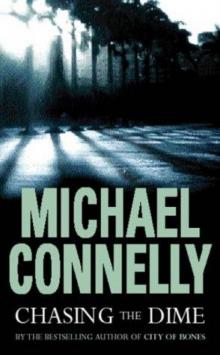 Chasing the Dime (2002)
Chasing the Dime (2002)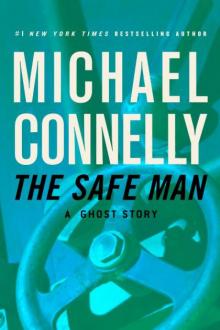 The Safe Man
The Safe Man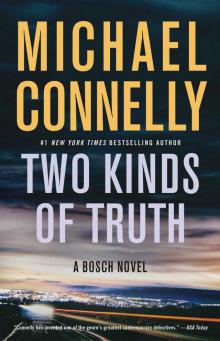 Two Kinds of Truth (A Harry Bosch Novel)
Two Kinds of Truth (A Harry Bosch Novel)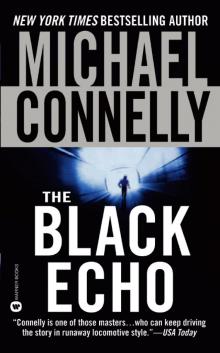 Harry Bosch 01 - The Black Echo
Harry Bosch 01 - The Black Echo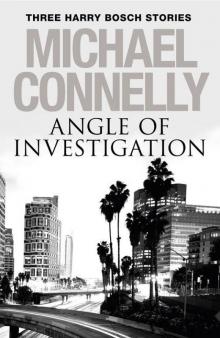 Angle of Investigation: Three Harry Bosch Short Stories
Angle of Investigation: Three Harry Bosch Short Stories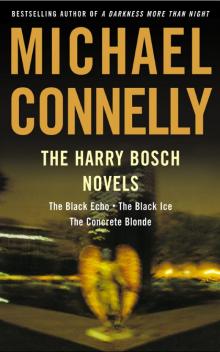 The Harry Bosch Novels Box Set 1
The Harry Bosch Novels Box Set 1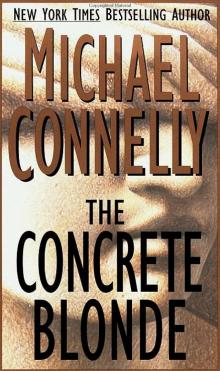 The Concrete Blonde hb-3
The Concrete Blonde hb-3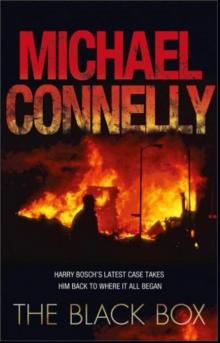 The Black Box hb-18
The Black Box hb-18 Short Stories
Short Stories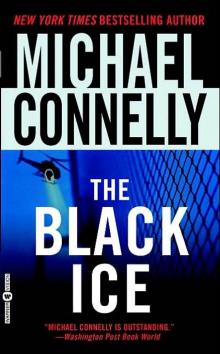 The Black Ice hb-2
The Black Ice hb-2 The Last Coyote (1995)
The Last Coyote (1995) The Gods of Guilt mh-5
The Gods of Guilt mh-5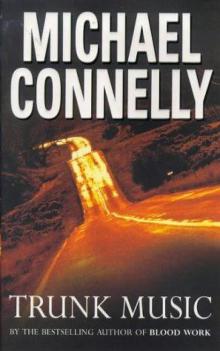 Trunk Music (1996)
Trunk Music (1996)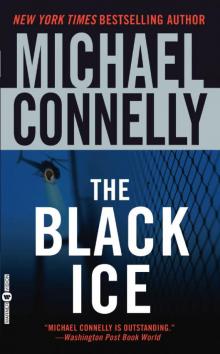 Harry Bosch 02 - The Black Ice
Harry Bosch 02 - The Black Ice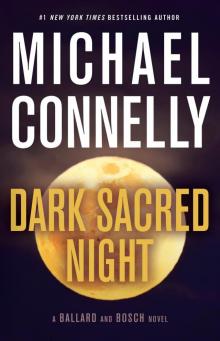 Dark Sacred Night
Dark Sacred Night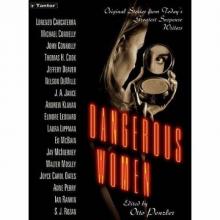 Cielo Azul
Cielo Azul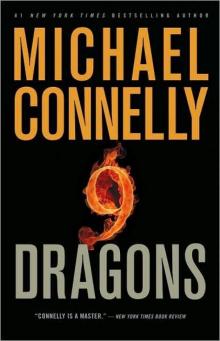 9 Dragons
9 Dragons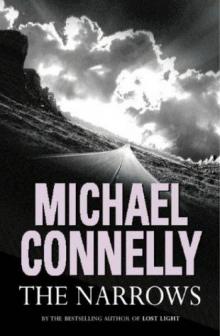 The Narrows (2004)
The Narrows (2004)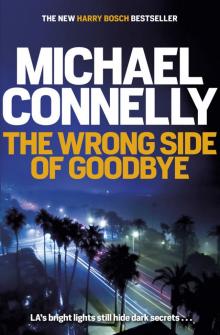 The Wrong Side of Goodbye (Harry Bosch Series)
The Wrong Side of Goodbye (Harry Bosch Series) In The Shadow Of The Master: Classic Tales by Edgar Allan Poe
In The Shadow Of The Master: Classic Tales by Edgar Allan Poe Void Moon (1999)
Void Moon (1999)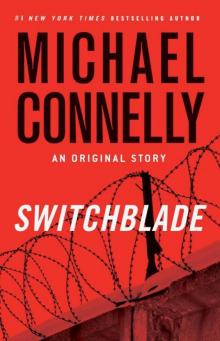 Switchblade: An Original Story (harry bosch)
Switchblade: An Original Story (harry bosch) The Harry Bosch Novels, Volume 2
The Harry Bosch Novels, Volume 2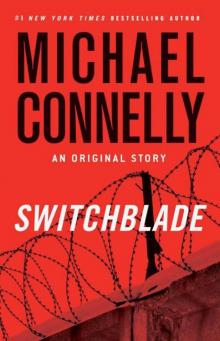 Switchblade: An Original Story
Switchblade: An Original Story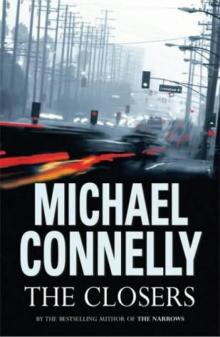 The Closers (2005)
The Closers (2005)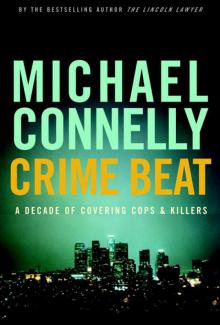 Crime Beat
Crime Beat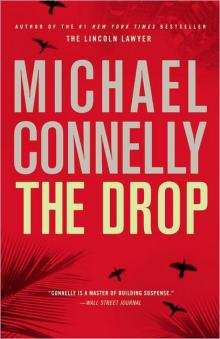 The Drop hb-17
The Drop hb-17 The Gods of Guilt (Mickey Haller 5)
The Gods of Guilt (Mickey Haller 5)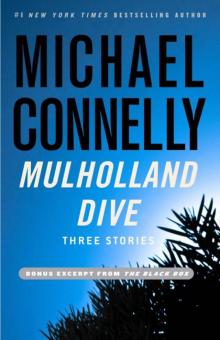 Mulholland Dive: Three Stories
Mulholland Dive: Three Stories Lost Light (2003)
Lost Light (2003)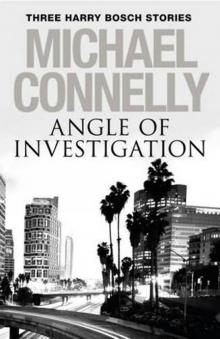 Angle of Investigation: Three Harry Bosch Stories
Angle of Investigation: Three Harry Bosch Stories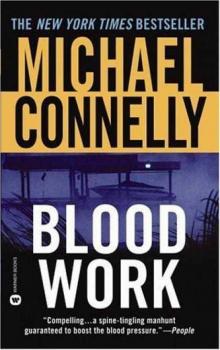 Blood Work
Blood Work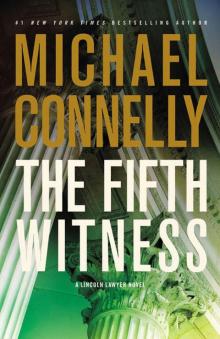 The Fifth Witness: A Novel
The Fifth Witness: A Novel A Darkness More Than Night (2000)
A Darkness More Than Night (2000)